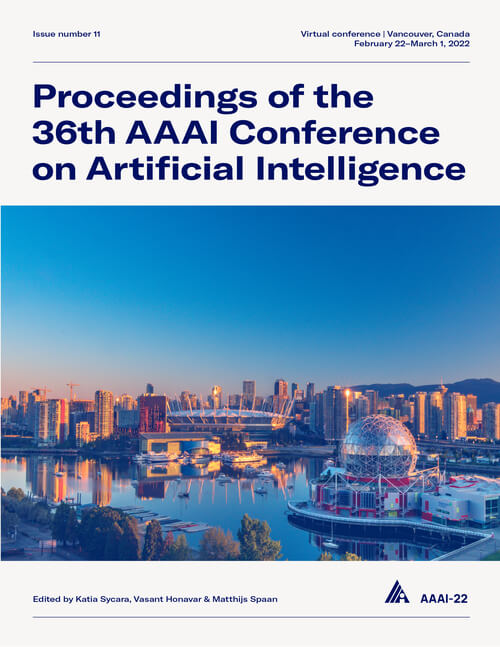Modification-Fair Cluster Editing
DOI:
https://doi.org/10.1609/aaai.v36i6.20617Keywords:
Machine Learning (ML)Abstract
The classic Cluster Editing problem (also known as Correlation Clustering) asks to transform a given graph into a disjoint union of cliques (clusters) by a small number of edge modifications. When applied to vertex-colored graphs (the colors representing subgroups), standard algorithms for the NP-hard Cluster Editing problem may yield solutions that are biased towards subgroups of data (e.g., demographic groups), measured in the number of modifications incident to the members of the subgroups. We propose a modification fairness constraint which ensures that the number of edits incident to each subgroup is proportional to its size. To start with, we study Modification-Fair Cluster Editing for graphs with two vertex colors. We show that the problem is NP-hard even if one may only insert edges within a subgroup; note that in the classic "non-fair" setting, this case is trivially polynomial-time solvable. However, in the more general editing form, the modification-fair variant remains fixed-parameter tractable with respect to the number of edge edits. We complement these and further theoretical results with an empirical analysis of our model on real-world social networks where we find that the price of modification-fairness is surprisingly low, that is, the cost of optimal modification-fair differs from the cost of optimal "non-fair" solutions only by a small percentage.Downloads
Published
2022-06-28
How to Cite
Froese, V., Kellerhals, L., & Niedermeier, R. (2022). Modification-Fair Cluster Editing. Proceedings of the AAAI Conference on Artificial Intelligence, 36(6), 6631-6638. https://doi.org/10.1609/aaai.v36i6.20617
Issue
Section
AAAI Technical Track on Machine Learning I

